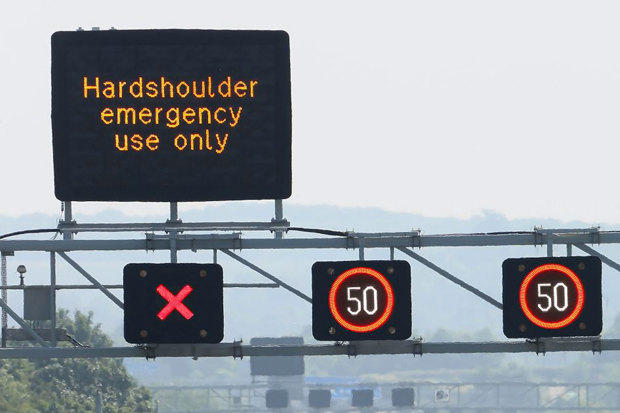Motorway ‘red X’ rule-breakers rocket to record high

More than 53,000 motorists have been caught ignoring motorway ‘red X’ signs since the police started enforcing rules against the contravention.
Red X signs are used to close lanes on smart motorways when an obstruction such as a broken down vehicle is detected in the lane ahead.
Enforcement is by automatic cameras and results in a fixed penalty notice of up to £100 and three points – although more severe penalties or a court appearance are also possible.
The number of motorists caught flouting the rules has risen ten-fold in three years and road safety experts are now saying the rising numbers show the "fragility" of a key smart motorway safety system.
The new research from road safety charity IAM Roadsmart uses data from a Freedom of Information request. It shows that, in 2021, just nine police forces were enforcing against red X infringements. This increased to 21 forces in 2023.
Almost all police forces with smart motorways in their boundary are now, finally, actively pursuing red X rule-breakers.
Surrey police has caught the most red X offenders – 11,360 of them – thanks to stretches of the M3, M23 and M25 being without its boundary. Thames Valley police was next up, again thanks to the M25. It caught almost 10,000 offenders.
Alarmingly, Bedfordshire police only began enforcement in 2023, despite having a stretch of the M1 running through its boundary. It caught a paltry 23 drivers committing red X offences.
There are now almost 400 miles of smart motorway in England, which includes all-lanes running, where the hard shoulder is permanently removed.
Data suggests there were 24 fatalities on a smart motorway in 2022, 14 of which occurred on motorways without a hard shoulder.
In a recent survey, IAM Roadsmart found that almost 9 in 10 motorists believe the smart shoulder on smart motorways should be reinstated "immediately".
"Ignoring a red X sign on a smart motorway is dangerous because it risks a serious collision and, for this reason, we welcome police forces clamping down on those who break the law," says IAM Roadsmart's Nicholas Lyes.
He says that the majority of drivers have serious reservations about the safety of smart motorways where the hard shoulder has been removed and these figures are unlikely to persuade them they are safe.
RAC road safety spokesperson Rod Dennis says that the figures sadly underline the fragility of one of the systems designed to keep stricken drivers safe on smart motorways.
"The safety of any driver who is unlucky enough to stop on a smart motorway depends entirely on other people seeing the red X sign and moving to another lane. It’s therefore terrifying to think that so many people have either ignored them or failed to spot them in the first place."
Dennis adds that the latter is all the more likely given the fact that on all-lane-running stretches of motorway, where the hard shoulder has been removed completely, it’s largely roadside signs that communicate which lanes are closed which are harder for drivers to read than gantries that span the carriageway and have signs over each lane.
"It’s for this, and other reasons, that we’ve called on the new Government to convert all-lane running stretches of smart motorway to either controlled motorways – with hard shoulders permanently restored – or to dynamic hard shoulder schemes, where a hard shoulder is in place for much of the day and night, and only opened to traffic at the busiest times of day," adds Dennis.


